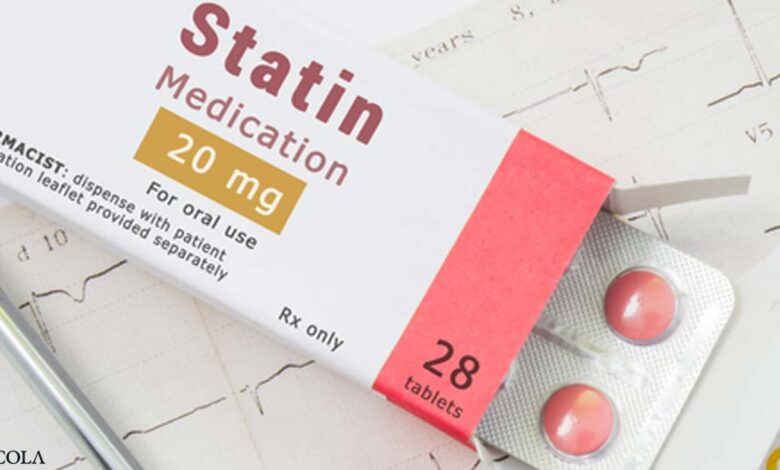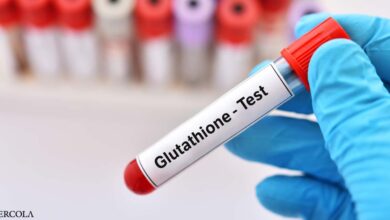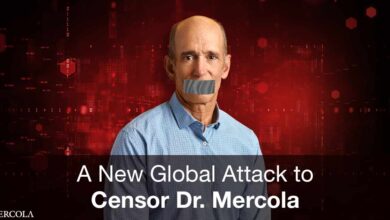The Great Statin Debate — Why Cholesterol Is Misunderstood

This article was previously published March 19, 2019, and has been updated with new information.
In 2019, the health editor for the Daily Mail published an article touting the merits of statin cholesterol-lowering drugs and, worse, eschewing the “deadly propaganda of the statin deniers.”1
Pointing to an analysis published in BMJ, which suggested 200,000 patients may have stopped taking statins due to negative media reports about the drugs,2 the article attacks those who question statins’ merits and claims the notion that statins reduce the risk of a major cardiac event as “indisputable scientific fact.”3
In a similar criticism, a group of doctors and statisticians published an article in JAMA July 6, 2022, complaining that the new 2021 guidelines for determining who is eligible for statin treatments were not low enough.4
The new guidelines are “alarming,” they say, because, now, only 4% of patients will receive Class I recommendations for statins, as opposed to the previous 20%. Also under Class II recommendations of the new guidelines, the numbers have “dropped from 56% to 19%.” The data were taken from a study published in JAMA the same day, which concluded:5
“The 2021 ESC guidelines dramatically reduce statin eligibility in low-risk European countries, and future European guidelines should consider lower treatment thresholds to increase the use of statins for primary prevention of cardiovascular disease.”
No matter what year it is, though, the real story is far from black and white, which is why the great statin debate continues — and experts in the field continue to speak out against statins in an attempt to clear the widespread myths about cholesterol and your health.
Are Concerns Over Statins ‘Fake News’?
The Daily Mail examined what it said amounted to “fake news” on statins, including the idea that having high cholesterol is harmless. The fact is, “high cholesterol” as defined by many health organizations is not one in the same with the levels of high cholesterol that can actually harm your health.
Here the article points to familial hypercholesterolaemia,6 an inherited condition characterized by abnormally high cholesterol, which tends to be resistant to lowering with lifestyle strategies like diet and exercise. I have long stated that the only group of people who may benefit from a cholesterol-lowering medication are those with genetic familial hypercholesterolemia. This is the vast minority of people taking these drugs, probably far less than one in 1000.
However, according to the U.S. Centers for Disease Control and Prevention, these drugs are also indicated for anyone who has already had a heart attack or stroke or been diagnosed with peripheral arterial disease, has an LDL cholesterol of 190 mg/dL or higher, or is between the ages of 40 and 75 with an LDL level of 70 mg/dL or higher and diabetes or a high risk of developing heart disease or stroke.7
In short, a staggering number of Americans are “eligible” for cholesterol-lowering drugs. According to the CDC, that number is more than 78 million Americans, who are either eligible for the drugs or already taking them.8 Yet, the Daily Mail article pointed out that “millions of middle-aged people who would benefit from taking statins, don’t,” which could be “because they’ve been led to believe that the drugs don’t work.”9
There’s More to Heart Disease Than Cholesterol
Statins are effective at lowering cholesterol, but whether this is the panacea for helping you avoid heart disease and extend your life span is a question worthy of closer scrutiny.
Such has been done by Dr. Malcolm Kendrick, a British physician and author of “Doctoring Data: How to Sort Out Medical Advice from Medical Nonsense,” “The Great Cholesterol Con” and “A Statin Nation: Damaging Millions in a Brave New Post-Health World” — and also one of the “statin deniers” targeted by the Daily Mail. Kendrick is among those who believe cholesterol does not cause heart disease — and he fires back at the Daily Mail article in the video above.
Kendrick states the most concerning risk factors for cardiovascular disease are actually insulin resistance, Type 2 diabetes and the chronic inflammation associated with these conditions, along with factors such as how you eat — whether you’re rushing or taking your time — and other stress-related factors, both physical and psychological.
He believes the conventional LDL/cholesterol hypothesis is flawed, in part because damage of the interior layers of your arteries precedes heart disease,10 and this damage can be induced by a number of factors, including smoking, high blood pressure, elevated blood sugar and inflammation.
Once the artery is damaged, cholesterol-rich plaque begins to build up as a protective mechanism. Problems arise when the rate of damage and resultant blood clot formation outpace or outstrip your body’s ability to repair. As noted by Kendrick, “For good health, you want to maintain a balance between the blood being too ready to clot, and the blood not clotting when you need it to.”11
So, what factors might lead to a situation in which the arterial damage is greater than your body’s ability to repair it? Kendrick’s “short list” includes 30 factors alone, which include:
- Use of certain drugs, including oral steroids, omeprazole, Avastin and thalidomide
- Diseases such as Cushing’s disease, Kawasaki disease, rheumatoid arthritis, systemic lupus erythematosus, chronic kidney disease and acute renal failure, sickle cell disease, malaria and Type 2 diabetes, as well as bacterial and viral infections
- Acute physical and mental stress, and chronic mental stress
- Heavy metal exposure, including lead and mercury
- Certain nutritional deficiencies, including vitamins B and C deficiencies
Without Cholesterol in Your Body, You Would Die
Another “statin denier” outed by the Daily Mail is Zoe Harcombe, Ph.D., nutritional researcher, author and public speaker. She states, “It is virtually impossible to explain how vital cholesterol is to the human body. If you had no cholesterol in your body you would be dead.”12
Your liver manufactures most, about 80%, of the cholesterol your body requires, which in and of itself suggests your body cannot survive without it. The remaining 20% comes from your diet. However, dietary cholesterol is absorbed at a rate of 20 to 60%, depending on the individual, and if you consume less, your body will compensate by making more and vice versa.
Contrary to popular belief, cholesterol is a crucial molecule necessary for optimal health, and not nearly the damaging culprit it’s been made out to be. Since cholesterol is a fatty substance, it does not travel well through your water-based bloodstream. Hence it is encapsulated in a lipoprotein.
As noted by Harcombe, the notion that there is good and bad cholesterol is also wrong. Low-density lipoprotein (LDL) and high-density lipoprotein (HDL) are not even actually cholesterol; they’re carriers and transporters of cholesterol, triglycerides (fat), phospholipids and proteins. “LDL would more accurately be called the carrier of fresh cholesterol and HDL would more accurately be called the carrier of recycled cholesterol,” she says.13
Ivor Cummins, a biochemical engineer with a background in medical device engineering and leading teams in complex problem-solving, similarly likens the very low-density lipoprotein (VLDL) your liver makes to a boat that shuttles not only cholesterol but also triglycerides through your bloodstream to your tissues.
The VLDL will dock onto receptors in your muscle tissue, where it releases triglycerides to be used for energy. If your triglycerides are high, it means you’re eating too many net carbohydrates, because it’s actually sugar that causes triglycerides to rise, not dietary fat.
Once the VLDL has dropped off the triglycerides to be burnt for energy (or stored as fat if you’re not using the energy due to inactivity), the VLDL becomes a low-density lipoprotein (LDL), which in conventional thinking is a “bad” kind of cholesterol.
High-density lipoprotein (HDL) is colloquially known as “good” cholesterol, and the HDL is indeed beneficial in that it acts as a master manager, helping protect the LDL against oxidation and transporting triglycerides and cholesterol in and out of the VLDL. In a healthy person, the LDL will be reabsorbed by the liver after about two days, where it gets broken up and recycled.
As a general rule, a high-sugar diet will cause damaged LDLs to rise, beneficial HDLs to drop, triglycerides and, often, total cholesterol to rise. Coming full circle, all of these are conventional indicators of atherosclerosis or inflammation in your arteries that can precipitate a heart attack.
Apples May Lower Heart Attack Risk as Much as Statins
Dr. Aseem Malhotra, an interventional cardiologist consultant in London, U.K., is the third “statin denier” attacked by the Daily Mail. He gained quite a bit of publicity after the publication of his peer-reviewed editorial in BMJ in 2013, which argued that you should ignore advice to reduce your saturated fat intake, because it’s actually increasing your risk for obesity and heart disease.14
In addition to defending the merits of healthy saturated fats, Malhotra highlights the risks of statin drugs, noting that more than half of statin users stop using the drugs within a year, most citing side effects as the reason.15
Fatigue, nausea, joint and muscle pain and increases in blood sugar have all been associated with statin drug use, most of which cease when the drugs are stopped. He also points out that unhealthy diet, including excess sugar consumption, is the true culprit in heart disease:
“Over 80% of CVD [cardiovascular disease] is attributable to environmental factors, notably unhealthy diet and also smoking, alcohol and physical inactivity. Diet has primacy, accounting for a larger burden of CVD disease and death than tobacco, alcohol and inactivity combined. For those at low risk eating an apple a day has an equivalent risk reduction for myocardial infarction [heart attack] as taking a statin.”16,17
Statins Increase Diabetes Risk
Statins have been shown to increase your risk of diabetes via a number of different mechanisms. The most important one is that they increase insulin resistance, which can be extremely harmful to your health. Secondly, statins increase your diabetes risk by raising your blood sugar. Statins work by preventing your liver from making cholesterol.
As a result, your liver returns the sugar to your bloodstream, which raises your blood sugar levels. These drugs also rob your body of certain valuable nutrients, which can also impact your blood sugar levels. Two nutrients in particular, vitamin D and CoQ10, are both needed to maintain ideal blood glucose levels.
Importantly, statins deplete your body of CoQ10, vitamin K2, dolichol and selenium, thereby threatening your heart and overall health even further. Statins’ ability to lower the risk of minor heart attacks may actually be related to their ability to lower C-reactive protein, far more so than the lowering of cholesterol.
Researchers with the Erasmus Medical Center in The Netherlands recently analyzed data from more than 9,500 patients. Those who had ever used statins had a 38% higher risk of Type 2 diabetes, with the risk being higher in those with impaired glucose homeostasis and those who were overweight or obese.18
The researchers concluded, “Individuals using statins may be at higher risk for hyperglycemia, insulin resistance and eventually Type 2 diabetes. Rigorous preventive strategies such as glucose control and weight reduction in patients when initiating statin therapy might help minimizing the risk of diabetes.”
But a far better strategy may be preventing insulin resistance in the first place, by avoiding statin drugs and eating a healthy diet. According to Malhotra and a colleague:19
“In young adults, preventing insulin resistance could prevent 42 percent of myocardial infarctions, a larger reduction than correcting hypertension (36 percent), low high-density lipoprotein cholesterol (HDL-C) (31 percent), body mass index (BMI) (21 percent) or LDL-C (16 percent).20
It is plausible that the small benefits of statins in the prevention of CVD come from pleiotropic effects which are independent of LDL-lowering. The focus in primary prevention should therefore be on foods and food groups that have a proven benefit in reducing hard endpoints and mortality.”
How to Identify and Lower Your Heart Disease Risk
Rather than focusing on cholesterol, two tests that are far more important for assessing your CVD risk are the serum ferritin and gamma-glutamyl transpeptidase (GGT) tests. The GGT test can be used as a screening marker for excess free iron and is a great indicator of your sudden cardiac death risk. The recommended, ideal levels, of ferritin and GGT are:
• Ferritin — Adult men and nonmenstruating women: 30 to 40 nanograms per milliliter (ng/mL) or 75 to 100 nanomoles per liter (nmol/L).
The most commonly used threshold for iron deficiency in clinical studies is 12 to 15 ng/mL (30 to 37 nmol/L). You do not want to be below 20 ng/mL (50 nmol/L) or above 80 ng/mL (200 nmol/L). High iron during pregnancy is also problematic; having a level of 60 or 70 ng/mL (150 or 175 nmol/L) is associated with greater odds of poor pregnancy outcomes.
• GGT — Below 16 units per liter (U/L) for men and below 9 U/L for women. Above 25 U/L for men and 18 U/L for women, your risk of chronic disease increases significantly.
In order to protect yourself against heart disease, here are a number of suggestions that can help you lower your insulin resistance and restore your insulin sensitivity, among other heart-protective mechanisms:
|
Avoid environmental pollutants and toxins, including smoking, vaping, heavy metals, herbicides and pesticides, especially glyphosate. |
|
Minimize your exposure to electromagnetic fields and wireless radiation from cellphones, Wi-Fi, routers, smart meters and more, as this kind of radiation has been shown to cause serious free radical damage and mitochondrial dysfunction. |
|
Eat an unprocessed whole food-based diet low in net carbs and high in healthy fats. A ketogenic diet — which is very low in net carbohydrates and high in healthy fats — is key for boosting mitochondrial function. When your body is able to burn fat for fuel, your liver creates water-soluble fats called ketones that burn far more efficiently than carbs, thereby creating fewer reactive oxygen species and secondary free radicals. Ketones also decrease inflammation and improve glucose metabolism.21 |
|
Eat nitrate-rich foods to help normalize your blood pressure. Good sources include arugula, cilantro, rhubarb, butter leaf lettuce, mesclun mixed greens, beet greens, fresh beet juice, kvass (fermented beet juice) and fermented beet powder. |
|
Get plenty of nonexercise movement each day; walk more and incorporate higher intensity exercise as your health allows. |
|
Intermittently fast. After you’ve become accustomed to intermittently fasting for 16 to 18 hours, you can try a stricter fast once or twice a week, when you eat a 300- to 800-calorie meal loaded with detox supporting nutrients, followed by a 24-hour fast. So, in essence, you’re then only eating one 300- to 800-calorie meal in 42 hours. |
|
If you have heart disease, consider enhanced external counterpulsation (EECP). To find a provider, see EECP.com.22 |
|
If you have heart disease, you may also consider taking g-strophanthin, an adrenal hormone that helps create more parasympathetic nervous system neurotransmitters, thereby supporting your parasympathetic nervous system. It also helps flush out lactic acid. Strophanthus is the name of the plant, the active ingredient of which is called g-strophanthin in Europe, and ouabain in the United States. |
|
Get sensible sun exposure to optimize your vitamin D status and/or take an oral vitamin D3 supplement with magnesium and vitamin K2. |
|
Implement heart-based wellness practices such as connecting with loved ones and practicing gratitude. |




